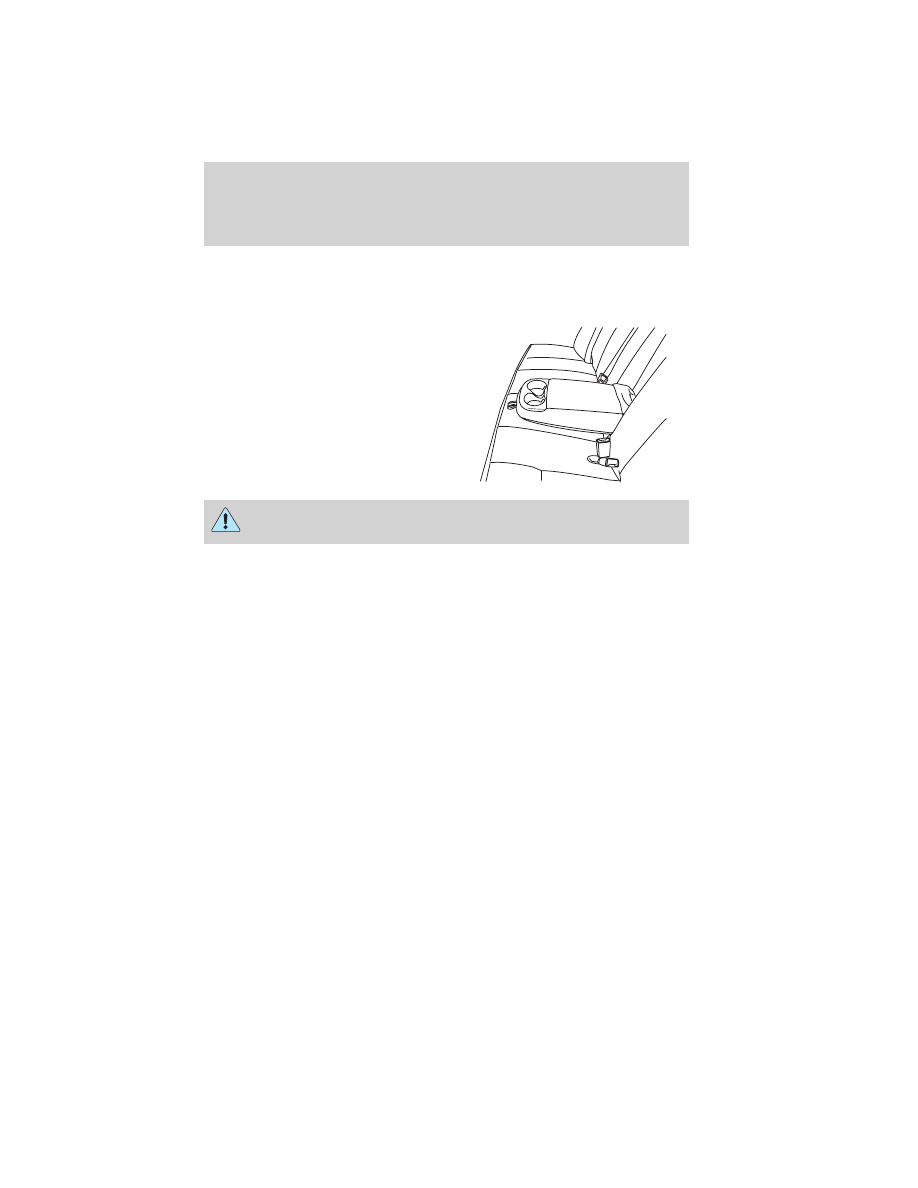Ford Crown Victoria (2010 year). Manual - part 24

REAR SEATS
Seat-mounted cup holders and armrest storage compartment
(if equipped)
To access the cup holders, fold the
armrest down.
WARNING: Use only soft cups in the cup holder. Hard objects
can injure you in a collision.
SAFETY RESTRAINTS
Personal Safety System™
The Personal Safety System™ provides an improved overall level of
frontal crash protection to front seat occupants and is designed to help
further reduce the risk of airbag-related injuries. The system is able to
analyze different occupant conditions and crash severity before activating
the appropriate safety devices to help better protect a range of
occupants in a variety of frontal crash situations.
Your vehicle’s Personal Safety System™ consists of the following items:
• Driver and passenger dual-stage airbag supplemental restraints
• Front safety belts with pretensioners, energy management retractors,
and safety belt usage sensors
• Driver’s seat position sensor
• Front crash severity sensor
• Front passenger sensing system
• “Passenger airbag off” or “pass airbag off” indicator lamp
• Restraints Control Module (RCM) with impact and safing sensors
• Restraint system warning light and back-up tone
Seating and Safety Restraints
97
2010 Crown Victoria (cro)
Owners Guide, 2nd Printing
USA (fus)